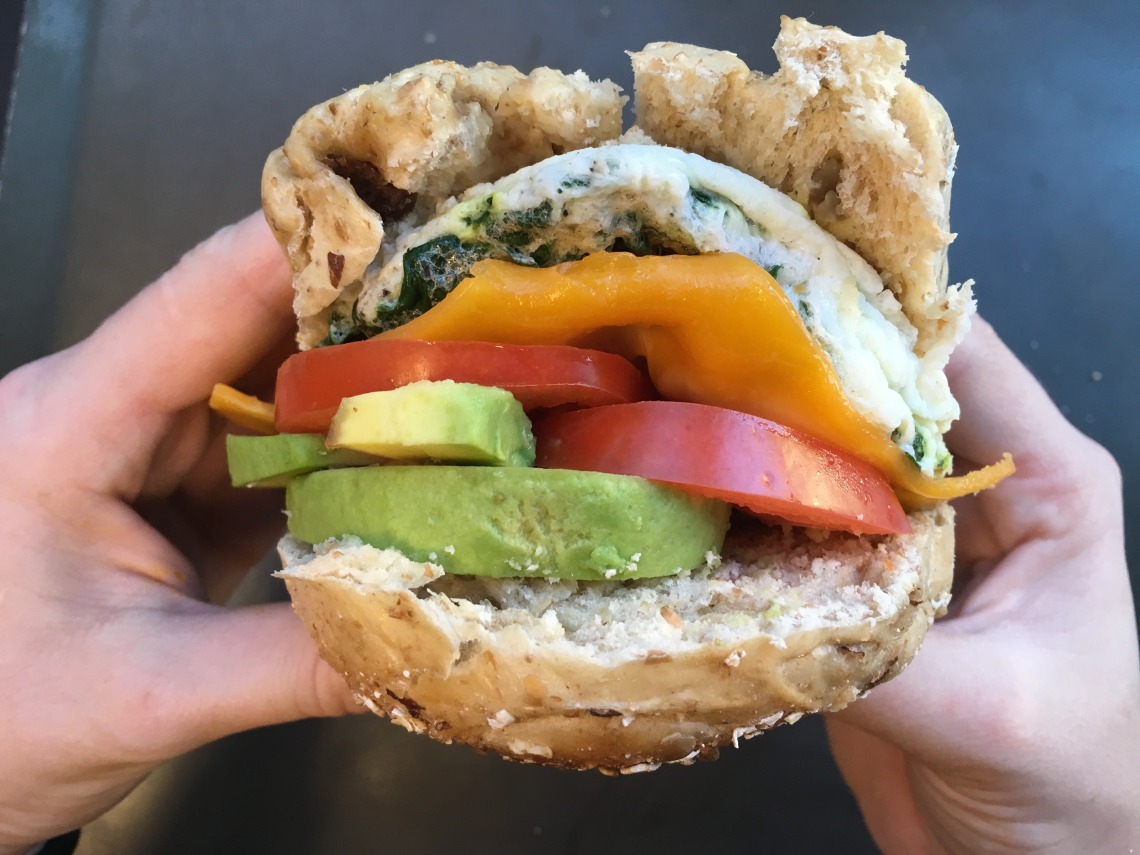Meal Planning Tool Kit Series: Breakfast Made Easy
Fueling up for the day, helps with concentration and improves energy levels! Think simple!

Some Key Tips to Get You Started:
|
Eat a wide variety of nutrient-rich foods. Each food contains a different mix of nutrients -- variety is the key to getting the nutrients you need. |
Try to include a little carbohydrate, protein, and fat in every meal. (Fat usually comes with protein, so you don't always need added fat.) |
| Enjoy whole grains, fruits and vegetables daily. | Schedule regular meals -- skipping meals often leads to feeling overly hungry and less nutrient-dense choices |
| Remember to include some satisfying foods into your day! | Planning ahead always helps! |
Why Breakfast?
Starting your day without breakfast is like trying to start a car without gas: It just doesn’t work. Missing breakfast can result in low energy and make it difficult to concentrate throughout the morning.
Protein at Breakfast
The addition of fiber, protein and a small amount of fat to the traditional carbohydrate-rich breakfast will provide sustainable energy that will last throughout the morning.
-
Here are a few ideas to get you started.
-
Low fat cottage cheese
-
Nut butters (peanut, almond)
-
Whole egg(s)
-
Egg whites
-
Small handful nuts (almonds, walnuts, pecans)
-
Pumpkin seeds
-
Sunflower seeds
-
Low-fat cheese, lean meat, fish, or poultry
-
Tofu
Cereal for Fuel and Fiber
Cereal can make a wonderful fiber-packed breakfast or snack. Use these tips to get the most out of the cereal you buy:
On the Nutrition Facts label look for:
-
10 grams of sugar or less per serving
-
4 grams of fiber or more per serving
Smoothies
Smoothies are a quick and easy source of substantial nutrition. They can be used a part of a healthful breakfast, as a snack, or even as dessert. The directions are easy -- put ingredients in the blender and blend until smooth – and the combinations are endless.
Choose 3-4 and blend; make sure you always choose a fluid.
| Fluid (1 cup) | Fruit (1-1 1/2 cups) | Veggie | Protein |
|---|---|---|---|
| Almond Milk | Fresh Berries | Fresh or frozen spinach | Nuts/seeds: almonds, chia seeds, flaxseeds, etc |
| Cow's Milk | Frozen Banana | Fresh Kale | Nut/seed Butters (almond, peanut, sunflower, etc) |
| Soy Milk (Regular or Chocolate) | Canned Fruit (drained) | Frozen riced cauliflower | Protein Powders: whey, soy, collagen, pea protein, etc. |
| Drinkable Yogurts | Frozen pineapples, mango and/or peaches | Shredded Carrots | Hemp Hearts |
| Fruit Juice | Frozen mixed fruit |
Example Smoothie combos:
-
Once container 6-8oz vanilla drinkable yogurt + ½ frozen banana + frozen peaches + handful fresh spinach
-
1 cup almond milk + 1 frozen banana + ½ cup frozen riced cauliflower + chocolate protein powder
-
1 cup soy milk + 1 cup frozen mixed fruit + handful of kale + 1-2 tablespoons almond butter
Almost-Instant Breakfasts
-
Yogurt Parfait: yogurt, fruit, flax or granola and a few nuts
-
Peanut Butter and Banana Sandwich on whole grain bread
-
Breakfast or protein bar
-
Cottage cheese, fruit and a bit of granola
-
Whole grain pita bread filled cheese, warm up and then fill with avocado slices & salsa
-
Whole grain toast with cream cheese, tomato and a slice of turkey
Got more questions? Contact Us! Follow along @uazcampushealth for more inspiring ideas about all things well-being.
